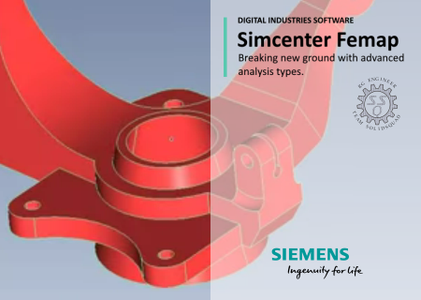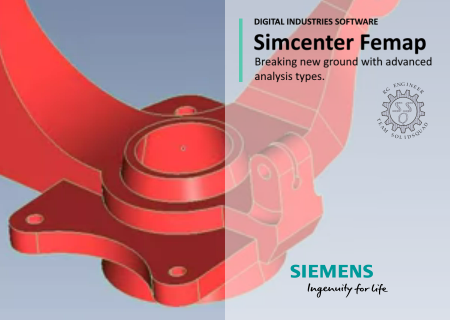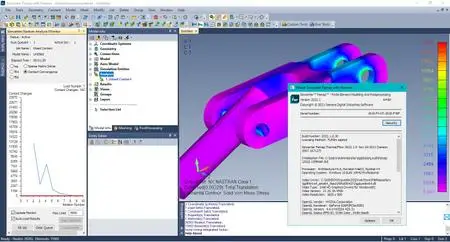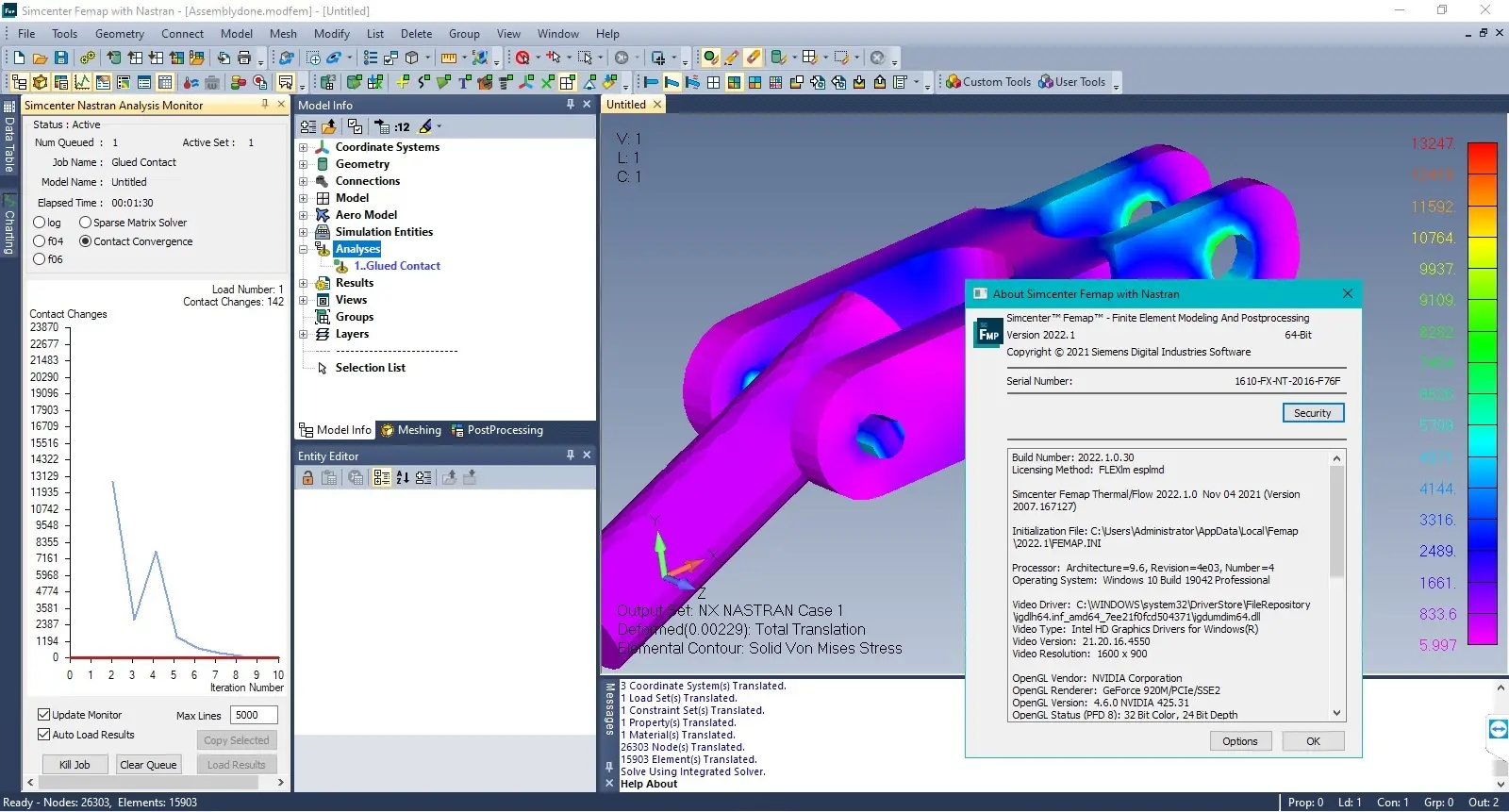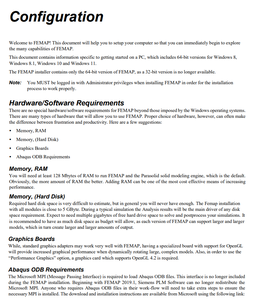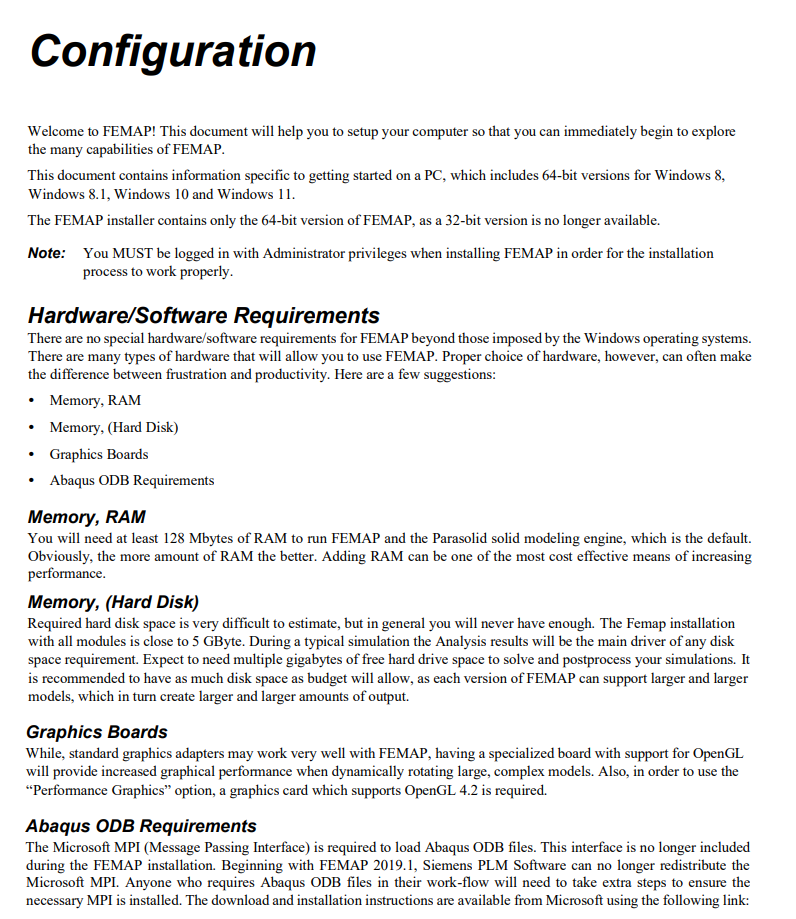Siemens Simcenter FEMAP 2022.1.0 | 2.7 Gb
Languages Supported: 中文 (Simplified), 中文 (Traditional), English, Deutsch, 日本語
Languages Supported: 中文 (Simplified), 中文 (Traditional), English, Deutsch, 日本語
The Siemens Digital Industries Software development team is pleased to announce the availability of Simcenter Femap 2022.1. The latest release provides a variety of enhancements that will improve your productivity across the simulation workflow.
Simcenter Femap 2022.1 what's new
Preprocessing enhancements
Simulation Entities – Kinematic Joints and Joint Connections
Simcenter Femap now provides support for advanced simulation methods, such as flexible body dynamics, using the Simcenter Nastran Multi-Step Nonlinear Kinematic solution, SOL 402. As a first step, kinematic joints have been added as Simulation Entities with the release of Simcenter Femap version 2022.1.
Kinematic Joints connect two nodes and allow a certain relationship of relative motion or rotation between the two, depending on what type of joint is established. The types of Kinematic joints include revolute, inline, slider, spherical, cylindrical, and other highly specialized types, which can be used for the analysis of models containing moving parts, such as aerostructures, helicopters, deployable structures in space, gas turbines, and machine tools. The addition of drive loads as a new load type can be used to enforce displacements or rotations on kinematic joints.
To accelerate the process of creating kinematic joints, Kinematic Connections have also been added, which are a type of entity unique to Simcenter Femap. Kinematic Connections allow you to establish how a kinematic joint will be connected to geometry or existing mesh of a model and are then expanded to the necessary nodes when a Simcenter Nastran input file is exported.
Simulation Entities – Flexible Sliders
Simcenter Femap 2022.1 delivers expanded support for kinematic analysis of mechanical systems with the addition of “Flexible Slider” simulation entities in version 2022.1. Flexible Sliders allow analysts to accurately simulate the deformation of curvilinear tracks as assembly components are displaced along them.
This new capability includes several parameters for customization, including different slider types, driver loads, and additional friction options. The available slider types allow different constraints for relative rotation of the nodes sliding along the track. This includes spherical, prismatic, cylindrical, and universal types. For driver loads, Flexible Sliders can be driven with both external load sets, and forces/displacements applied directly to a specified driver node. For friction, available types include options for validating motion (no friction), infinite friction, and displacement or velocity-dependent frictional forces.
When defining Flexible Sliders in Simcenter Femap, multiple options are available for specifying their required references. Existing group entities can be assigned to the Flexible Slider to define the nodes to be displaced along the track, or the beam elements making up the track. In the absence of group entities, dynamic selection lists can be used to assign these entities on-the-fly. After creating the Flexible Sliders, they can be selectively exported to a SOL 402 analysis with support for specification of single Flexible Sliders or a union of Flexible Sliders.
Meshing
Mesh, hex mesh bodies
Hex-dominant meshing of solid geometry with little to no simplification or subdivision into smaller and simpler regions has long been desired by the finite element analysis (FEA) community. Simcenter™ Femap™ version 2022.1 introduces this exciting technology to users for the first time.
How does it work? The hex-dominant mesher first fills a solid volume with as many hexahedral elements as possible, then fills the remainder of the volume with wedge, pyramid, and tetrahedral elements, as needed. This process creates high-quality elements which can be sent directly to the Simcenter Nastran solver with no additional interaction from the user or manual refinement of the mesh.
In addition to being able to mesh single parts, the hex-dominant mesher can work on multiple parts to create a single continuous mesh of the assembly. This new feature includes additional options to control various aspects of mesh sizing, mesh associativity, and whether all elements should be given midside nodes during the meshing process.
Solver support
Simcenter Nastran Enhanced Solution Monitor
Simcenter Femap 2022.1 supports direct access to the Simcenter Nastran Solution Monitor, allowing you to view the results of an analysis and/or review curated output from Simcenter Nastran. This includes information, warning, and error messages recovered directly from Simcenter Nastran while an analysis is running or after upon completion.
Solution Monitor is most helpful when used to monitor Simcenter Nastran Multistep Structural and Multistep Nonlinear Kinematic Solutions Sequences, SOL 401 and SOL 402, which are the default for such analyses. The Solution Monitor can also be used for other types of analysis by selecting the appropriate option for Solution Monitor when specifying Executive and Solution Options in the Analysis Set Manager.
Solution Monitor provides immense value when using SOL 401 or SOL 402 because it provides vital information, such as the time increment and iterations for each step, convergence criteria, cumulative number of iterations, energy evolution, contact/material status, number of nodes in contact, damaged elements, creep elements, and elements which have experienced plastic deformation. Knowing this information during a multi-step solve can be used to determine if a solution is properly converging and should be allowed to continue, or if it is diverging and various options or model setup choices should be reevaluated.
Nastran Updates
Simcenter Femap 2022.1 includes improved support for functionality available in Simcenter Nastran, as well as other Nastran solvers.
It’s now possible to instruct Nastran to create an output file, which can be used by other Simcenter applications (including Simcenter 3D) from within the Simcenter Femap user interface via the Analysis Set Manager. You can now also set a preference to make this the default behavior.
Additionally, a Tension-Only Quadrilateral element is now available in Simcenter Nastran Multi-Step Structural Solution Sequence, SOL 401, which has the ability to convert from a shell element to a shear panel element when certain user-specified criteria have been met. Once the conversion has occurred, the element will continue to act as a shear panel for each Sequentially Dependent subcase following an initial Sequentially Independent subcase. It’s also possible to specify a parameter which controls whether tension-only capabilities should be considered for a particular analysis.
Finally, support is added for entries in Simcenter Nastran which offer a streamlined approach to specify control options for the Dynamic Design Analysis Method (DDAM). DDAM is a three-step process which runs a modal analysis, sends needed results and other inputs specified by the user to the NAVSHOCK Fortran application, then creates Summed Modal Results during the final step.
Simcenter Femap software is a standalone finite element modeling (FEM) pre- and postprocessor for engineering simulation and analysis. The software is computer-aided design (CAD) independent and can import geometry from all major CAD platforms. It supports most CAD data formats. Simcenter Femap also works in combination with a wide variety of finite element analysis (FEA) solvers, including Simcenter Nastran software.
The latest release provides a variety of enhancements that will improve your productivity across the simulation workflow. Building on the advanced meshing capabilities added for Simcenter Femap 2021.2, this version sees the addition of automated hex-dominant meshing technology which eliminates the need for geometry simplification and subdivision typically required to create a high-qual-ity hex-dominant mesh. Support for Kinematic Joints and Flexible Sliders, available in Simcenter Nastran’s Multi-Step Nonlinear Kinematic solution, has been added to better capture the real-world behavior of assembly models which contain parts which move relative to one another. A new solution monitor optimized to provide valuable real-time feedback for Simcenter Nastran’s Multi-step solutions is also now available. Finally, updates to the user interface designed to improve overall user experience in various areas, such as controlling display options, entity selection, grouping, and accessing the modernized Online Help System, have been implemented.
Siemens PLM Software. a business unit of the Siemens Digital Factory Division, is a leading global provider of software solutions to drive the digital transformation of industry, creating new opportunities for manufacturers to realize innovation. With headquarters in Plano, Texas, and over 140,000 customers worldwide, Siemens PLM Software works with companies of all sizes to transform the way ideas come to life, the way products are realized, and the way products and assets in operation are used and understood.
Product: Siemens Simcenter FEMAP
Version: 2022.1 with NX Nastran
Supported Architectures: x64
Website Home Page : www.plm.automation.siemens.com
Languages Supported: multilanguage
System Requirements: PC *
Size: 2.7 Gb
Please visit my blog
Added by 3% of the overall size of the archive of information for the restoration
No mirrors please
Added by 3% of the overall size of the archive of information for the restoration
No mirrors please


